Subtotal: $310.00
Oud Agarwood
Agarwood
What is Agarwood?
Agarwood (also known as agar, aloeswood oud wood, oudh wood, eaglewood, or agar wood.) is a rare and precious wood formed from a type of tree in the Aquilaria genus. The Aquilaria tree is a large, towering species that can reach up to 30 meters in height.
Oud wood is formed through the infection of a specific fungus called Phialophora parasitica. This fungus infiltrates the trunk of the Aquilaria tree through wounds, leading to the production of a distinctive fragrant resin. This fragrant resin gradually accumulates within the trunk of the Aquilaria tree, giving rise to oud wood.
Formation of Agarwood
Agarwood is formed through the infection of a fungus called Phialophora parasitica. This fungus infiltrates the trunk of the Aquilaria tree through wounds, such as cuts, cracks, insect holes, etc., and produces a distinctive fragrant resin. This fragrant resin gradually accumulates within the Aquilaria tree trunk, forming oud wood.
Formation Process Due to Fungal Infection
Infection Process:
- The fungus Phialophora parasitica infiltrates the Aquilaria tree trunk through wounds, such as cuts, cracks, insect holes, etc.
- This fungus develops and reproduces inside the Aquilaria tree trunk, secreting toxic substances.
- These toxins stimulate the Aquilaria tree to produce a distinctive fragrant resin as a defense mechanism against the fungal invasion.
Resin Accumulation Process:
- This fragrant resin gradually accumulates within the Aquilaria tree trunk, forming agarwood.
- The time it takes for oud wood to form depends on various factors such as the type of Aquilaria tree, the type of fungus, environmental conditions, etc.
- Typically, oud wood takes 10 to 20 years to form.

Formation Process Due to Infection by Bacteria or Viruses
Besides fungi, certain bacteria and viruses can also contribute to the formation of agarwood, although this method is less common.
Formation Process Due to Bacterial Infection:
- Bacteria invade the Aquilaria tree trunk through wounds, then produce toxic substances.
- These toxins stimulate the Aquilaria tree to produce a distinctive fragrant resin as a defense mechanism against bacterial invasion.
- This fragrant resin gradually accumulates within the Aquilaria tree trunk, forming oud wood.
Formation Process Due to Viral Infection:
- Viruses invade the Aquilaria tree trunk through wounds, causing physiological disorders in the tree.
- These physiological disorders stimulate the Aquilaria tree to produce a distinctive fragrant resin as a defense mechanism against viral invasion.
- This fragrant resin gradually accumulates within the Aquilaria tree trunk, forming agarwood.
Types of Agarwood
Aloeswood is classified based on various criteria, including color, luster, density, etc. Some common types of oud wood include:
Classification Based on Origin
Agarwood is classified based on its origin, determined by the growth characteristics of the Aquilaria tree and the natural conditions of each region:
- Vietnam: Vietnam is one of the countries with the largest oud wood reserves globally. Vietnamese agarwood is of high quality and highly valued in the international market.
- Indonesia: Indonesia also has a large Aloeswood reserve with diverse colors, ranging from dark brown to deep yellow, and a distinctive fragrance.
- India: India has a long history of using oud wood. Indian oud wood is dark in color with a rich fragrance.
- Malaysia: Malaysia is another country with a significant oud wood reserve, similar in color to Indonesian oud wood.
- Laos: Laos has a large oud wood reserve, mainly concentrated in the northern mountainous regions, with dark color and a rich fragrance.
- Cambodia: Cambodia also possesses a substantial oudwood reserve, concentrated in the western mountainous regions, similar in color to Laotian oud wood.
- China: China is a large consumer of oud wood, mainly importing from other countries.
Check our Featured products!
In addition to the mentioned countries, agarwood is also found in other countries like Thailand, Myanmar, Sri Lanka, etc. Different origins result in varying characteristics such as color, fragrance, hardness, etc., leading to different values. Vietnamese, Indonesian, and Indian oud woods are highly regarded internationally.
Classification Based on Size
Agarwood can be classified based on size, considering the length, width, and thickness of the wood:
- Chunk Aloeswood: Large-sized oud wood, typically ranging from 10-50 cm. Chunk oud wood is highly valuable and often used for crafting premium furniture.
- Powder Oud wood: Small-sized oud wood, typically ranging from 0.1-1 cm. Powder oud wood has a lower value than chunk oud wood and is often used in the production of essential oils, incense, etc.
- Chip Agarwood: Medium-sized oud wood, typically ranging from 1-10 cm. Chip oud wood has intermediate value and is used for crafting artistic products, jewelry, etc.
Classification Based on Age
Aloeswood can be classified based on age, considering the time it takes for oud wood to form:
- Youthful Oud wood: Oud wood with an age of under 10 years. Youthful oud wood has a lower concentration of fragrant resin, less distinctive fragrance, and lower value.
- Mature Agarwood: Oud wood with an age between 10-30 years. Mature Oud wood has a higher concentration of fragrant resin, a more distinctive fragrance, and a higher value compared to youthful oud wood.
- Aged Oud wood: Oud wood with an age of over 30 years. Aged Oud wood has the highest concentration of fragrant resin, the most distinctive fragrance, and the highest value.
Classification Based on Characteristics
Agarwood can be classified based on various characteristics, such as color, fragrance, hardness, etc.:
- Kinam Agarwood: Extremely high-quality Oud wood formed through the infection of a specific fungus named Phialophora spathulate. Kinam Oud wood is black in color, glossy, has a distinctive fragrance, and is extremely rare and valuable.
- Kyara Aloeswood: Oud wood with a dark red color and a distinctive fragrance, also rare and valuable.
- Chen Xiang Agarwood: oudwood with a dark yellow color and a distinctive fragrance, also rare and valuable.
Classification Based on Condition
Agarwood can be classified based on its condition, considering whether it has undergone processing or not:
- Raw Agarwood: Oud wood that has not undergone processing, retaining the original shape of the Aquilaria tree. Raw Oud wood has high value and is often used for crafting high-end furniture, jewelry, etc.
- Processed Oud wood: Oud wood that has been processed into various products such as bracelets, rings, incense, etc. Processed oud wood has a lower value than raw oud wood, depending on the quality of the product.
Classification Based on Usage
Agarwood can be classified based on its usage, considering its purpose:
- Burning Agarwood: Oud wood used for burning, and producing fragrance. Burning oud wood has high value and is often used in religious ceremonies, spa settings, etc.
- Incense Agarwood: Oud wood used for producing incense. Incense agarwood has a lower value than burning oud wood and is often used in homes and offices.
- Soaking Aloeswood: Oud wood is used for soaking in water, producing fragrant water. Soaking oud wood has a lower value than burning and incense oud wood and is often used for bathing and foot soaking.
Classification Based on Color
Agarwood is classified based on color, determined by the concentration of fragrant resin in the wood. The higher the resin content, the darker the color:
- Black Aloeswood: Oud wood with the highest resin content, up to 90%. Black Oud wood is black, and glossy, has a distinctive fragrance, and is extremely rare and valuable.
- Yellow Agarwood: Oud wood with a lower resin content than black oud wood, typically ranging from 60-80%. Yellow Oud wood is dark yellow, slightly glossy, and has a distinctive fragrance, with a higher value than brown oudh wood.
- Brown Aloeswood: Oud wood with the lowest resin content, typically ranging from 40-60%. Brown oud wood is light brown, somewhat dull, with a less distinctive fragrance compared to black and yellow oud wood, and has the lowest value among oud wood types.
Classification Based on Luster
Agarwood is classified based on luster, determined by the wood’s light reflection. oud wood with high luster usually has a higher resin content and higher value:
- Glossy Agarwood: oudwood with high luster, typically ranging from 70-90%. Glossy Aloeswood has a bright color, a distinctive fragrance, and a higher value than matte agarwood.
- Matte Aloeswood: oudwood with low luster, typically ranging from 40-70%. Matte Aloeswood has a darker color, less distinctive fragrance than glossy agarwood, and lower value.
Classification Based on Density
Agarwood is classified based on density, determined by the percentage of wood containing fragrant resin. oudwood with high density usually has a higher resin content and higher value:
- Dense Agarwood: oudwood with high density, typically ranging from 70-90%. Dense Aloeswood has a bright color, a distinctive fragrance, and a higher value than light agarwood.
- Light Aloeswood:oudwood with low density, typically ranging from 40-70%. Light oudwood has a darker color, less distinctive fragrance than dense oudwood, and lower value.
See agarwood video here:
Some Special Types of Agarwood
In addition to common types of oud wood, there are some special types known as “kinam,” which are highly valuable. Kinam is a type of agarwood with extremely high quality, formed through the infection of a specific fungus called Phialophora spathulata. Kinam has a deep black color, a distinctive fragrance, is very rare, and holds high value.
Some special types of kinam with very high value include:
- Tram Kinam (Black Kinam): This is the highest quality kinam, formed through the infection of aged Aquilaria trees. Tram Kinam has a deep black color, a distinctive fragrance, is very rare, and holds high value.
- Huyet Kinam (Blood Kinam): This kinam has a dark red color, a distinctive fragrance, is very rare, and holds high value.
- Huong Kinam (Green or Dark Yellow Kinam): This kinam has a green or dark yellow color, a distinctive fragrance, is very rare, and holds high value.
- Bach Kinam (White Kinam): This kinam has a white color, a distinctive fragrance, is the rarest, and holds the highest value.
These special types of kinam are often used in religious ceremonies, bringing high spiritual value to individuals.
Value of Agarwood
Agarwood is a rare and valuable type of wood with high economic and medicinal value. The value of oudwood depends on various factors, including color, glossiness, density, etc. Black oudwood, particularly oud, holds the highest value and can reach billions of Vietnamese dong.
Chemical Composition of Agarwood
The chemical composition of agarwood is highly complex, comprising over 200 different organic compounds. Among them, many compounds hold high value, such as:
- Sandaracopimaric Acid: This compound is a key contributor to the distinctive fragrance of oud wood. Sandaracopimaric acid is a fragrant compound with a sweet, pure scent, considered one of the rarest fragrances in the world.
- Benzoic Acid: This compound has antibacterial and anti-inflammatory properties. Benzoic acid can inhibit the growth of bacteria and microorganisms, helping to prevent infections. It also has pain-relieving and anti-inflammatory effects.
- Cinnamic Acid: This compound has antioxidant properties, preventing aging. Cinnamic acid can neutralize free radicals, protecting cells from damage. It also has skin-brightening and anti-wrinkle effects.
In addition to the above compounds, agarwood contains various other valuable compounds, such as:
- Elemicin Acid: Acts as a sedative, and reduces stress.
- Eugenol Acid: Has anti-inflammatory properties, and relieves pain.
- Cedrol Acid: Possesses antioxidant properties, and prevents aging.
These compounds give oudwood its distinctive fragrance and contribute to its pharmacological effects.
Value and Applications of Agarwood
Agarwood is a rare and valuable wood with high economic and medicinal value. It is utilized in various fields, including:
Agarwood in Medicine
Agarwood has a long history of use in traditional medicine in many countries worldwide, including China, India, Vietnam, etc. It has anti-inflammatory, pain-relieving, antibacterial, antifungal properties. Additionally, oudwood has calming effects and can help reduce stress.
Some Pharmacological Effects of Agarwood
Agarwood has numerous pharmacological effects, including:
- Anti-inflammatory, Pain Relief: Agarwood contains compounds like sandaracopimaric acid, benzoic acid, and cinnamic acid, which can inhibit the production of inflammatory substances, reducing pain and swelling, improving symptoms of conditions like arthritis, gastric ulcers, and colitis.
- Antibacterial, Antiviral: oudwood contains compounds that can inhibit the growth of bacteria and viruses, preventing infections.
- Antioxidant, Anti-aging: Aloeswood contains compounds with antioxidant properties, protecting cells from damage and preventing skin aging, as well as diseases caused by oxidative stress like cancer and cardiovascular diseases.
- Sedative, Stress Reduction: oudwood contains compounds with sedative effects, reducing stress, anxiety, and fatigue.
- Immune System Boost: oudwood contains compounds that stimulate the immune system, helping the body defend against diseases.
Applications of Agarwood in Medicine include:
- Respiratory Infections: oudwood’s antibacterial and antiviral properties help prevent respiratory infections like sore throat and bronchitis.
- Joint Inflammation: oudwood’s anti-inflammatory and pain-relieving effects can alleviate symptoms of joint inflammation.
- Skin Aging: oudwood’s antioxidant properties help prevent skin aging, keeping the skin smooth and youthful.
- Stress, Depression: oudwood’s calming and stress-reducing effects contribute to improving mood and reducing anxiety and depression.
- Cancer Prevention: Aloeswood’s antioxidant effects may contribute to preventing cancer.
It is important to note that agarwood should be sourced from reputable suppliers with guaranteed quality. Dosage should be monitored, and pregnant women, nursing mothers, and children under 12 should consult a doctor before use.
Check our Featured products!
Agarwood in Perfumery
Agarwood is a crucial ingredient in the production of fragrances. Its fragrance is highly valued and considered one of the rarest in the world. Agarwood is used to create scents for products such as perfumes, essential oils, incense, etc.
The distinctive fragrance of oudwood, characterized by its sweetness and purity, provides a relaxing and comforting sensation. The fragrance can be categorized based on the origin and age of Aloeswood.
oudwood is used in perfume production to create unique and distinct scents. The fragrance of oudwood in perfumes can enhance other scents or create a unique and separate fragrance.
Agarwood is also used in the production of essential oils. Aloeswood essential oil has various health benefits, including anti-inflammatory, pain relief, antibacterial, antiviral, antioxidant, and stress reduction.
Additionally, oud wood is used in the production of incense. Aloeswood incense emits a pure and refreshing fragrance, creating a relaxing and pleasant atmosphere. Agarwood incense is often used in religious ceremonies or to create a serene environment.
Agarwood in Cosmetics
Agarwood is utilized in cosmetics to provide fragrance and skincare benefits. The fragrance of oudwood has a relaxing effect, promoting a sense of well-being. Oud wood also contributes to skin nourishment, leaving the skin soft and smooth.
Aloeswood is used in cosmetic products such as:
- Body Perfume: Oudh wood is used to create fragrances for body perfumes.
- Nourishing Creams: oudh wood is included in creams to provide fragrance and skincare benefits.
- Serums: Oudh wood is used in serums for its aromatic and skincare properties.
- Hair Nourishing Oils: Oudh wood is used in hair oils for its beneficial effects on hair and scalp health.
- Room Sprays: Oudh wood is used in room sprays to provide a pleasant fragrance and a relaxing atmosphere.
Agarwood in Other Fields
Beyond medicine, perfumery, and cosmetics, agarwood is also utilized in various other fields such as:
- Furniture: Oudh wood is used in crafting high-end furniture, providing a luxurious and durable finish. It has natural properties that resist pests, warping, and cracking.
- Jewelry: Oudh wood is used in creating jewelry items like bracelets and rings, offering high aesthetic value. Its beautiful color and intricate wood grain patterns add an element of luxury and sophistication.
- Religious Ceremonies: Oudh wood is used in religious ceremonies, contributing a pure and aromatic fragrance that helps individuals connect with nature and enhance spiritual experiences. It is also used in spiritual rituals for peace and good fortune.
Oudh wood is a versatile and valuable resource with applications in various domains, from traditional medicine to modern perfumery and beyond.
Agarwood Vietnam
Vietnam is one of the countries with the largest oud wood reserves in the world, primarily located in the Central and Central Highlands provinces, including Quang Nam, Quang Binh, Kon Tum, Gia Lai, Dak Lak,…
Vietnamese oudh wood is highly regarded for its quality and value. The value of Vietnamese agarwood depends on various factors, including:
- Type: Submerged agarwood has the highest value, followed by heavy gram oudh wood, and finally, cultivated oudh wood.
- Size: Oudh wood pieces are more valuable than oudh wood powder and Aloeswood chips.
- Age: Aged oudh wood is more valuable than young oudh wood.
- Characteristics: Ki Nam oudh wood has the highest value, followed by Ki Tu oudh wood, and oudh wood blood.
For example, in 2022, a 1.5kg block of Ki Nam oudwood was sold for 100 billion VND.
Agarwood Processing Methods
In addition to the mentioned oudh wood processing methods, Vietnamese agarwood is also processed into various products such as:
- Agarwood Essential Oil: Extracted from oudh wood through steam distillation, it is used in medicine, fragrance, cosmetics,…
Health Benefits of Agarwood Essential Oil
- Sandaracopimaric Acid: Anti-inflammatory and pain-relieving.
- Benzoic Acid: Antibacterial and anti-inflammatory.
- Cinnamic Acid: Anti-inflammatory and pain-relieving.
Antibacterial and Antiviral Properties
- Sandaracopimaric Acid: Antibacterial and antiviral, preventing infections.
- Benzoic Acid: Antibacterial and antiviral, inhibiting the growth of bacteria and viruses.
- Cinnamic Acid: Antibacterial and antiviral, inhibiting the growth of bacteria and viruses.
Antioxidant and Anti-Aging Effects
- Sandaracopimaric Acid: Antioxidant, protecting cells from damage.
- Benzoic Acid: Antioxidant, neutralizing free radicals, preventing skin aging and diseases like cancer and heart problems.
- Cinnamic Acid: Antioxidant, neutralizing free radicals, keeping the skin smooth and youthful.
Calming and Stress-Reducing Properties
- Sandaracopimaric Acid: Calming, reducing stress, anxiety, and fatigue.
- Elemicin Acid: Calming, affects the central nervous system, reducing stress, anxiety, and fatigue.
Preservation of Agarwood
Challenges in preserving agarwood
Agarwood is a rare and economically valuable wood with high medicinal significance. However, Oudh Wood is facing numerous challenges that threaten its survival.
Over-exploitation
Over-exploitation is the most significant challenge in preserving oudh wood. Being a rare and economically valuable wood, excessive exploitation has led to a depletion of agarwood reserves.
Currently, oudh wood is extracted through various methods, including natural extraction, manual extraction, and industrial extraction. Natural extraction involves traditional methods, using manual techniques to extract agarwood from infected Aquilaria trees. Manual extraction is done using primitive tools, while industrial extraction employs modern machinery.
Over-exploitation of oudh wood leads to severe consequences, including:
- Depletion of Aloeswood reserves: Excessive exploitation causes a continuous decline in oudh wood reserves, increasing the risk of oudh wood extinction.
- Environmental impact: Improper manual and industrial oudh wood extraction adversely affects the environment, leading to deforestation and environmental pollution.
- Transformation into criminal activities: Illegal oudh wood extraction has become a criminal activity, jeopardizing law and order.
Deforestation
Deforestation is another significant challenge in preserving agarwood. oudh wood is primarily formed in virgin forests, and deforestation results in a reduction of oudh wood reserves.
Currently, virgin forests in Vietnam are severely destroyed, mainly due to illegal logging and hydropower construction. Deforestation narrows the habitat of Aquilaria trees, leading to a decreased likelihood of agarwood formation.
Conservation Solutions
To preserve agarwood, there needs to be collective efforts from all levels, sectors, and society. Some conservation solutions include:
- Enhancing awareness through education about the importance of oudh wood conservation.
- Strengthening control to prevent illegal oudh wood exploitation activities.
- Reforestation to restore the natural habitat of Aquilaria trees.
- Developing sustainable oudh wood cultivation models.
Other Challenges in Agarwood Conservation
Besides the mentioned challenges, oudh wood faces additional obstacles, such as:
- Climate change: Negative environmental changes, including those in forest environments, may affect the growth and development of Aquilaria trees, reducing agarwood formation.
- Competition from other plant species: The high economic value of oudh wood may lead to the exploitation of other plant species, creating competition and reducing the survival chances of oudh wood.
To effectively preserve agarwood, close coordination is required among all levels, sectors, and society. Conservation measures should be implemented systematically, efficiently, and adapted to the current situation.
Conclusion
Agarwood (oud) is a rare and highly valued wood with significant economic, medical, and cultural importance. Eaglewood is formed through the infection of a fungus called Phialophora parasitica. This fungus infiltrates the trunk of Aquilaria trees through wounds, subsequently producing a distinctive fragrant resin. This resin accumulates gradually in the Aquilaria tree trunk, forming Eaglewood.
Eaglewood has a distinctive fragrance and is used in various fields such as:
- Medicine: Eaglewood has anti-inflammatory, analgesic, antibacterial, antifungal properties, and also acts as a tranquilizer, reducing stress.
- Fragrance: Agarwood is a crucial ingredient in fragrance production. Its fragrance is highly valued, being one of the rarest scents globally. Eaglewood is used to create fragrances for products like perfumes, essential oils, and incense.
- Cosmetics: Agarwood is used in cosmetics for its fragrance and skin-nourishing properties. The relaxing aroma of Eaglewood contributes to mental well-being, while its skincare benefits leave the skin soft and smooth.
Furthermore, besides medicine, fragrance, and cosmetics, agarwood is also utilized in other areas such as:
- Furniture: Eaglewood is employed in crafting high-end furniture products, adding a touch of luxury and sophistication.
- Jewelry: Eaglewood is used in crafting jewelry items like bracelets and rings, bringing high aesthetic value.
- Religion: Eaglewood is used in religious ceremonies, providing a pure and fragrant ambiance, and fostering a connection with nature.
Agarwood is a precious natural resource with its value manifested in various aspects:
- Economic Value: Eaglewood holds high economic value, reaching up to billions of currency units.
- Medical Value: Eaglewood has diverse medicinal properties, used in numerous traditional remedies.
- Cultural Value: Eaglewood is employed in various cultural practices, adding aesthetic and spiritual value.
However, Eaglewood is currently facing over-exploitation, leading to a depletion of its reserves. The main cause of this situation is the increasing demand for agarwood, coupled with limited supply.
To preserve Eaglewood, comprehensive solutions are necessary, including:
- Enhancing Awareness and Education: Increase public awareness of the value of Eaglewood to reduce illegal harvesting.
- Strengthening Agarwood Harvest Control: Intensify checks and monitoring of Eaglewood harvesting activities, imposing strict penalties for violations.
- Reforestation and Habitat Restoration: Plant and protect forests to create a suitable habitat for Aquilaria trees, thereby enhancing agarwood reserves.

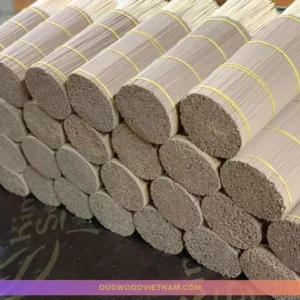 High Quality Agarwood Incense Stick | 100% Wild Agarwood | 500g
High Quality Agarwood Incense Stick | 100% Wild Agarwood | 500g 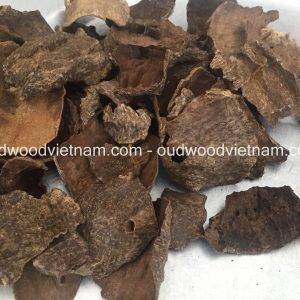 Natural Oud Wood Agarwood Chips | Mo | Grade A | 30g
Natural Oud Wood Agarwood Chips | Mo | Grade A | 30g 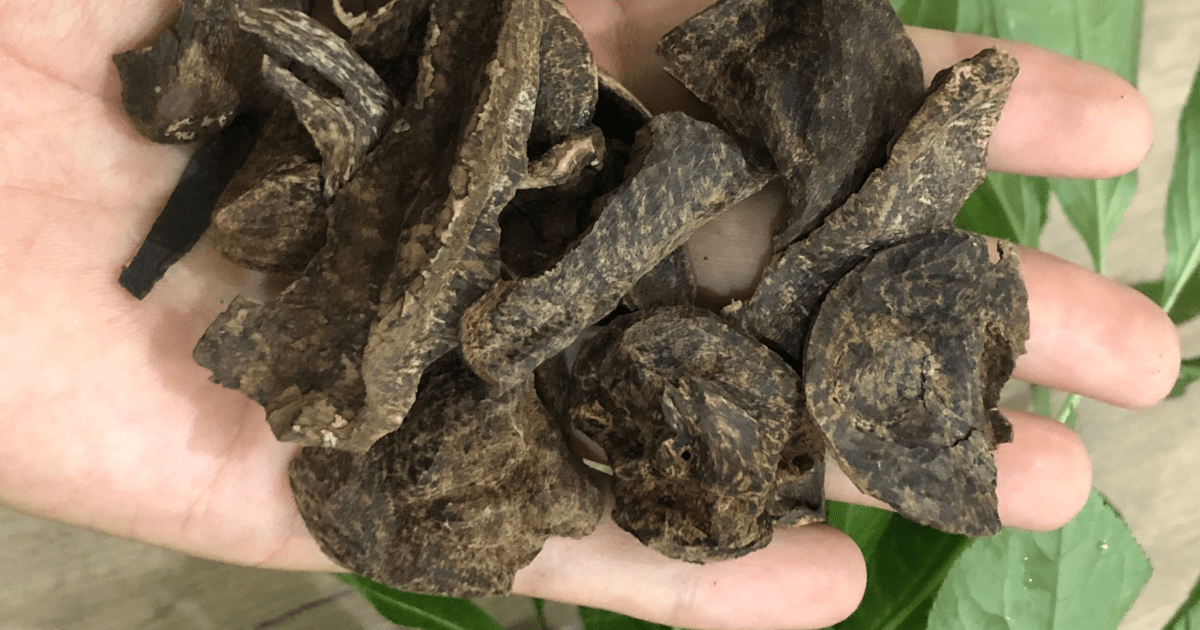
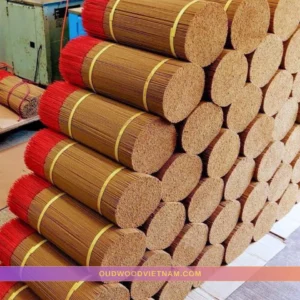
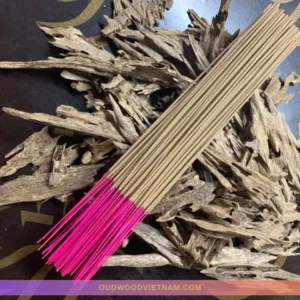


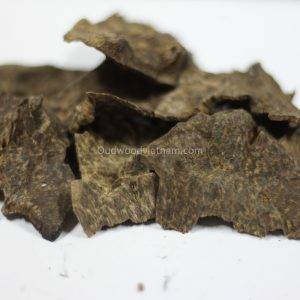

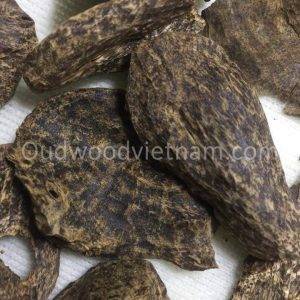


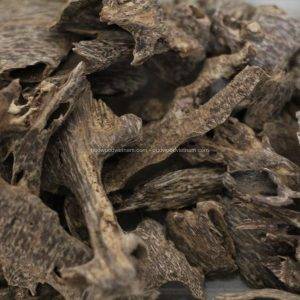
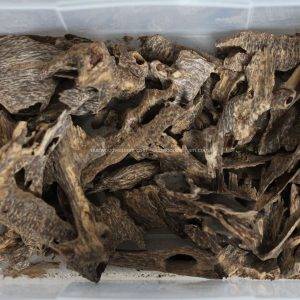
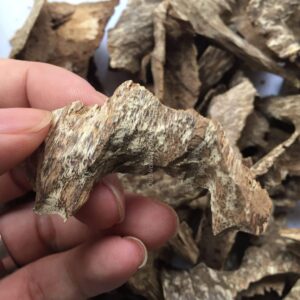


Oud Wood Agarwood Chips
Hoi An Oud Wood Agarwood Chips | Doi De A | Grade A++ | 20g
Oud Wood Agarwood Chips
Khanh Hoa Oud Wood Agarwood Chips | Chop Mu A | Grade A++ | 20g
Oud Wood Agarwood Chips
Natural Oud Wood Agarwood Chips | Mo | Grade A | 30g